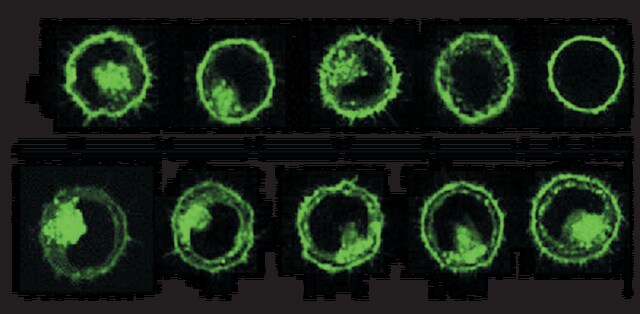MIDI26
PKH26 Red Fluorescent Cell Linker Midi Kit for General Cell Membrane Labeling
Distributed for Phanos Technologies
Sinônimo(s):
pkh membrane dye, red pkh
About This Item
Produtos recomendados
embalagem
pkg of 1 kit
fabricante/nome comercial
Distributed for Phanos Technologies
condição de armazenamento
protect from light
técnica(s)
flow cytometry: suitable
fluorescência
λex 551 nm; λem 567 nm (PKH26 dye)
aplicação(ões)
cell analysis
detection
método de detecção
fluorometric
Condições de expedição
ambient
temperatura de armazenamento
room temp
Descrição geral
Aplicação
Ligação
Informações legais
Somente componentes do kit
- Diluent C 60 mL
- PKH26 Cell Linker in Ethanol .2 mL
Palavra indicadora
Danger
Frases de perigo
Declarações de precaução
Classificações de perigo
Eye Irrit. 2 - Flam. Liq. 2
Código de classe de armazenamento
3 - Flammable liquids
Ponto de fulgor (°F)
57.2 °F - closed cup
Ponto de fulgor (°C)
14 °C - closed cup
Certificados de análise (COA)
Busque Certificados de análise (COA) digitando o Número do Lote do produto. Os números de lote e remessa podem ser encontrados no rótulo de um produto após a palavra “Lot” ou “Batch”.
Já possui este produto?
Encontre a documentação dos produtos que você adquiriu recentemente na biblioteca de documentos.
Os clientes também visualizaram
Artigos
PKH and CellVue® Fluorescent Cell Linker Kits provide fluorescent labeling of live cells over an extended period of time, with no apparent toxic effects.
Nossa equipe de cientistas tem experiência em todas as áreas de pesquisa, incluindo Life Sciences, ciência de materiais, síntese química, cromatografia, química analítica e muitas outras.
Entre em contato com a assistência técnica















